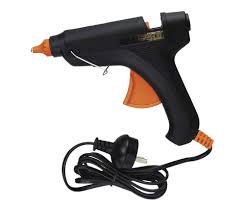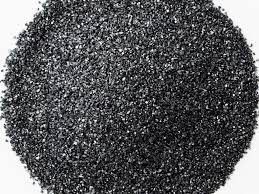Carbon fiber market share is foreseen to grow due to consistent demand from the automotive, aerospace, and sports equipment industries. It is reliable, lightweight, and cost-effective. It’s a material worthy of consideration by any business. Carbon Fiber is an extremely dynamic composite material with multivariate applications.
Carbon fiber is a remarkable material that can exist lifetime in the right state. Sheets and fabrics are widely used in many applications. Its strength, low thermal expansion, and corrosion resistance have enabled novel possibilities. It is widely used in baseball bats, spacecraft umbrellas, and wind turbine blades. This is not enough, what makes it even more exciting is its journey as a composite. Modern technology has a key role in driving the carbon fiber manufacturing process. As a result, the industry is expected to flourish in the coming years.

Evolution of Carbon Fiber Market
From a rocky start as carbonized material filament to prevalent navy ships carbon fiber has made it through a long way. Carbon fiber yarns containing up to 95% carbon appeared in markets around the 1970’s. Manufacturing processes also improved over the period. In the 1990s and 2000 engineers further scrutinized carbon fiber characteristics to explore more applications. This quest has resulted in skyrocketed market growth in recent years.
The military was the first industry to use carbon fiber in its significant capacity. The U.S. government decided to invest in rayon-based carbon fiber for navy ships. Later they extended the use of carbon fiber into aircraft components. This pioneering use of carbon fiber in industrial potential was game-changing. The carbon fiber market evolved to a much bigger size since then acquiring a horizon of applications across many industries.
The carbon fiber market was valued at USD 3457.74 million in 2022. It is expected to surpass a valuation of USD 5,605.57 million by the end of 2028. The market is foreseen to grow with a CAGR of 8.3% in 2022-2028.
Aircraft Industry Applications Fueling Carbon Fiber Market Share
Today maximum of carbon fiber is used by the aerospace industry. In aerospace carbon fiber was deployed in about the 1960’s. compressor blades, fuselages, engine cowlings, and other aircraft components made from carbon fiber. The aerospace industry is the dominant consumer of the carbon fiber market due to the advantage of lightweight material. Carbon fiber reduces the weight of aircraft and increases its fuel efficiency. Carbon fiber is strong enough to increase the safety of aircraft. The only restraining factor in the use of carbon fiber in aircraft is its price. Being more expensive than traditional materials companies may find it difficult to repair. However, the benefits outweigh the drawbacks of carbon fiber in aerospace.
Expanding commercial flights in the United States is foreseen to create demand for the carbon fiber in the aircraft industry. Gulfstream G650, Airbus A350 XWB, and Boing 787 are some well-recognized airways using carbon fiber to reduce the weight of aircraft and improve operational performance.
Investing into the Carbon Fiber Market- Sports Good is Next Profitable Niche
Credit for the Successful use of carbon fibers in sports goods goes to British researchers who introduced PAN-based carbon fiber. Capitalizing on the innovation, today sports goods have emerged as one of the lucrative consumer segments for the carbon fiber market.
The superior strength of carbon fiber outperforms steel. Despite being the strongest material, it is equally flexible. This is a perfect quality blend for sports goods. Sports companies invest in carbon fiber for the production of sports equipment with better precision and versatile movement capacity. Carbon fiber is used in tennis rackets to make them lighter in weight. Manufacturers have designed these rackets to improve comfort and control.
Cycle manufacturers are foreseen to reap benefits from the procurement of carbon fiber in the coming decade. Growing emphasis on active lifestyle is bound to increase cycling activities among Americans leading to growth in demand for light weight cycles. All carbon fiber bikes are preferred by people to finish maximum distance in minimum time. These factors are anticipated to increase North America’s Carbon fiber market share in the coming years.
Apart from bikes and tennis rackets, carbon fiber is used in skis and snowboards. The advantages of using skis made from carbon fiber have raised the demand for the carbon fiber market driven by immensely growing sports. The fact is it’s just the initial phase of carbon fiber in the sports segment, there are some companies specializing in it. With the growing technology cost of processing may go down and lead to a power price advantage for early investors in this domain.
Navigating through the Automobile Sector Application of Carbon Fiber
The concept of using carbon fiber to reduce the weight of component have gained traction of attention from modern automotive companies. Carbon fiber has been used in automobile manufacturing. From its first use in NASCAR vehicles due to its strength-to-weight ratio. The growing interest in fast cars and car racing has brought the cusp of transformation in carbon fiber applications in vehicles. Escalating electric vehicle space has created demand for energy efficiency leading to traction in carbon fiber deployment in the fabrication of vehicle components.
Carbon to Cure- Expanding Medicine Horizon of Carbon Fibers
The medical industry is the latest and by far most advanced consumer of carbon fiber. Heading its way through transparent X-rays, carbon fibers have made it to use in prosthetic limbs. Prosthetic limbs made using carbon fiber are strong and comfortable. In medical devices such as X-rays and Implants, Carbon fiber is used for top boards. They have a radiolucent effect where X-rays can pass without any interruption. Carbon fiber is wearing resistance and it’s ideal for medical devices. Growing medical sector investment in Asia Pacific countries is expected to favor the expansion of the Asia Pacific carbon fiber market in the coming decade.
What are Success Milestones in the Carbon Fiber Market?
As we expect the carbon fiber arsenal to continue to evolve in the future as well, there are certain challenges investors have to tackle to grow.
How to Minimize the Cost of Fabrication? Think Textile-Grade PAN!
Manufacturing of carbon fiber has always been a complex process due to the requirement of careful control at every stage. Any mishandling during optimization till the end product can affect the properties of the end product. Carbon fiber precursors have high cost leading to barriers to their widespread adoption. Companies striving to research about mechanical properties of commercially available carbon fibers to increase their strength. Polyethylene is seen as an effective alternative to reduce the cost of commercially available carbon fibers. The Textile-grade PAN is a new attraction among market players soon to hit the commercial space.
Companies investing in minimal-defect carbon fibers are anticipated to generate lucrative revenue in the coming years. Especially for small-diameter fibers, advanced spinning methods are scrutinized for improving the performance of final carbon fiber composites.
Collaboration and Partnerships- Incremental Improvements
Companies in the carbon fiber market are foreseen to utilize organic strategies for growth. Product-based partnerships and collaboration are key tactics used by dominant market players. Business think tanks and carbon research programs could be beneficial for unfolding new dimensions of carbon fiber composites. Collaborating with universities could be considered fruitful in the coming years. The government’s interest in energy-efficient technologies is likely to ease the funding and investment in carbon fiber. We expect more private and public-private partnerships in the coming years in the carbon fiber market.
Incremental improvement has been seen in the Asia Pacific carbon fiber market throughout these years. Japan is a leading country with an increased focus on energy-efficient and environmentally friendly CNG vehicles. Growing demand from the automotive industry is foreseen to drive demand for carbon fiber in the light weight pressure vessels market. Moreover, mergers and acquisitions are foreseen to transform the investment scenario in the Europe carbon fiber market.
Research on Competition Materials Instead of Competitors
Carbon fiber market players investing in material research are likely to report their well-being in the long term. Growing concerns around the high cost of carbon fiber fabrication, hunt for alternatives foreseen to spur in coming years. Leading market players already exploring lignin and polymer blends as alternative precursors. Material research aims to achieve modest carbon fiber mechanical strength. Even though the industry is bound to become competitive in the coming years. Investing in material research is seen as key to a competitive edge in the global market.
The development of advanced nanofillers is focused on certain carbon fiber market players. Nanotube-based hierarchical carbon fibers and hollow carbon fibers are expected to aid in the performance of carbon fibers in coming years defeating the existing market challenges.
Future Outlook of the Carbon Fiber Market
The future of the carbon fiber market looks promising. Growing research and development in the domain and technological advancement are foreseen to unleash more applications in the coming years. However, the industry needs passionate professionals and training modules to take carbon composites upward.
The carbon fiber market has evolved through various stages leading to where it is today. Companies have to target novel applications to further expand their arsenal. Low-cost technologies should be prioritized in the coming decade to gain a pioneering advantage in power price. Reinvesting profits with a commitment to long-term goals essentially benefits the future carbon market. Consolidation, collaboration, and partnerships are likely to remain key tactics used by market players to climb heights of success.



